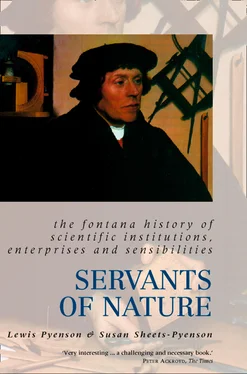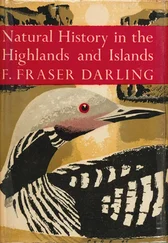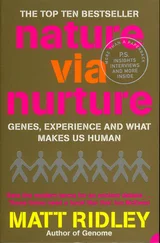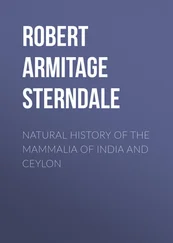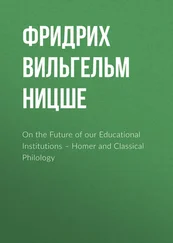Universities elsewhere
During the Third Republic, from 1871 to 1940, French administrators tried to borrow features of the German universities. Of all nations they were slowest to make the desired improvements, the research doctorate firmly establishing itself in France only in the late 1920s. But what of laissez-faire England?
For nearly two generations, the Scottish pressure valve accommodated the enormous demands for scientific education which had been generated by the First Industrial Revolution of steam, coal, iron, and textiles. The valve became insufficient by the 1820s, when Oxford and Cambridge still discouraged entry from religious nonconformists (the last of the religious ‘tests’, required for obtaining a diploma, were swept away only in 1871) and offered nothing approximating advanced scientific or even medical instruction. The reform of British education occurred over the middle quarters of the century. Generations after dissenters had established schools for languages and science outside the pale of the Church of England, English Public Schools were renovated with French, German, and mathematics under remarkable headmasters like Shrewsbury’s Benjamin Hall Kennedy (1804–1889), Charterhouse’s William Haig Brown (1823–1907), and Rugby’s Thomas Arnold (1795–1842), the father of poet Matthew Arnold.
Early in the nineteenth century London was a bit like Prussia’s Berlin had been: a seat of government without a university. Unlike Berlin, London generated scientific colleges piecemeal. The Benthamite-inspired University College founded in 1828 and the establishment King’s College in 1830 eventually became the larger installations of a huge organization, the University of London, which countersigned diplomas (by examination) at many domestic and colonial locations. London colleges offering scientific and technical instruction multiplied: the Royal College of Chemistry (founded in 1845 by students of Justus von Liebig), the Royal School of Mines (founded in 1851 along the model of the Ecole des Mines in Paris), and the City and Guilds of London Institute (founded in 1878 and located in the storied, sixteenth-century Gresham College).
The earliest of the so-called ‘red-brick’ universities in England’s industrial north also grew by collegial accretion. Durham revived its Cromwellian university in 1832, added a college for physical science at Newcastle-Upon-Tyne (of which John Theodore Merz was for many years the guiding spirit) and a medical school, and then picked up affiliated colleges in places such as Barbados (Codrington) and Sierra Leone (Fourah Bay). Manchester, growing from Owens College to a university in 1877, had within its orbit colleges at Liverpool, Leeds, Birmingham, and Sheffield, although these branches declared institutional independence within a generation. University affiliations were marks of prestige and avenues to power at a time when the old Scottish and English universities sent members to Parliament and enjoyed the privilege of conducting courts of common law with the prerogative of imprisoning women for morals offences.
The prosecution of research in English universities was something of an inconsistent accident: Cambridge’s Cavendish Laboratory rising to world prominence under its first four directors (James Clerk Maxwell [1831–1879], John William Strutt, Lord Rayleigh [1842–1919], Sir Joseph John Thomson [1856–1940], Ernest, Lord Rutherford [1871–1937]) and Oxford’s magnificently appointed Clarendon Laboratory (founded with money originally willed for a hippodrome) sinking into desuetude under its fainéant directors Ralph Bellamy Clifton (1836–1921) and Frederick Alexander Lindemann (1886–1957). To a certain extent science in England lived vicariously from imperial recruits, Rutherford’s trajectory (from Christchurch, New Zealand, to Cambridge to Montreal to Manchester and back triumphantly to Cambridge) being a paradigmatic illustration. Before 1918 the preparation of scientists did not generally include a doctorate, the British having marked this diploma (as the Russians also reserved it) as a laudeo for illustrious professors. (Rutherford’s DSc came courtesy of McGill University after he had been appointed Second Macdonald Professor of Physics there.)
Unlike England and France, the United States responded with enthusiasm to notions Germanic. Early in the nineteenth century the new nation had religiously-affiliated colleges of the English kind, public universities financed by individual states, and a diverse collection of privately endowed institutions of higher learning – there being generally no governmental restrictions on recognizing institutions that variously styled themselves colleges, academies, and high schools. There was, indeed, no clear distinction between secondary education and higher learning, high-school and college diplomas being roughly equal in number across the nineteenth century. Americans adopted French engineering schools as soon as the Germans did, and with more felicitous results. Until 1850 science was best acquired at the West Point military academy and at nearby Rensselaer Polytechnical Institute, both modelled on the Ecole Polytechnique. Diverse polytechnics since then, such as the Massachusetts and California institutes of technology, Case, Carnegie, Armour, Rice, Stevens, and Drexel, established themselves as temples of science and technology, the Americans never having separated (as the Germans, the French, and the English separated them) the two distinct traditions.
About 1870 a number of high-minded American educators introduced the German philosophy doctorate under its Latin cognomen ( Philosophiae Doctor , or PhD), even though not one of them oversaw an institution with a philosophy faculty. The innovation spread through refurbished religious institutions, like Yale and Harvard, older private institutions like the University of Pennsylvania, state universities like the ones at Berkeley, Ann Arbor, and Madison, and newly endowed institutions of learning like Johns Hopkins, Vanderbilt, the University of Chicago, and Stanford. When universities like Princeton and Duke upgraded themselves, they expanded in the direction of ‘graduate’ studies. To distinguish the research function from the usual propaedeutic mandate, American universities invented the ‘Graduate School’ as one of their constituent divisions.
In Europe the university was a corporate entity with state prerogatives – a guild structure – rather than a self-contained and contiguous physical plant. Sixteenth-century and seventeenth-century transplants in places like Santo Domingo, Quito, Puebla, and Manila followed the European model, lodging professors and students wherever room could be found in the neighbourhood of ecclesiastical monuments. Although certain private corporations continued the European pattern (notably in dense, urban settings like Philadelphia and New York), by the eighteenth century, the colleges and universities erected beyond Europe had made use of their greatest asset – land – as a privileged domain. The university campus proliferated. The College of William and Mary is emblematic. It is situated at one point of an isosceles triangle, the other apexes being the colonial Virginia legislature (House of Burgesses) and the governor’s residence. The granting of land has subsequently figured in the foundation of new universities, and even the Europeans came to embrace the principle. The finest extended example of nineteenth-century German academic architecture, in fact, is the splendid campus of the Université Louis Pasteur, erected as an imperial German university at Strasbourg shortly after the Germans conquered Alsace in 1871.
The nineteenth-century campus was designed as a bucolic retreat, incorporating sylvan glens, conspicuously vacant fields, and arboreta, all of which might be seen as compensation for the lack of state privileges. As science helped to propel the Second Industrial Revolution, scientists were able to withdraw into specially constructed temples of limestone or marble in pristine settings.
Читать дальше
